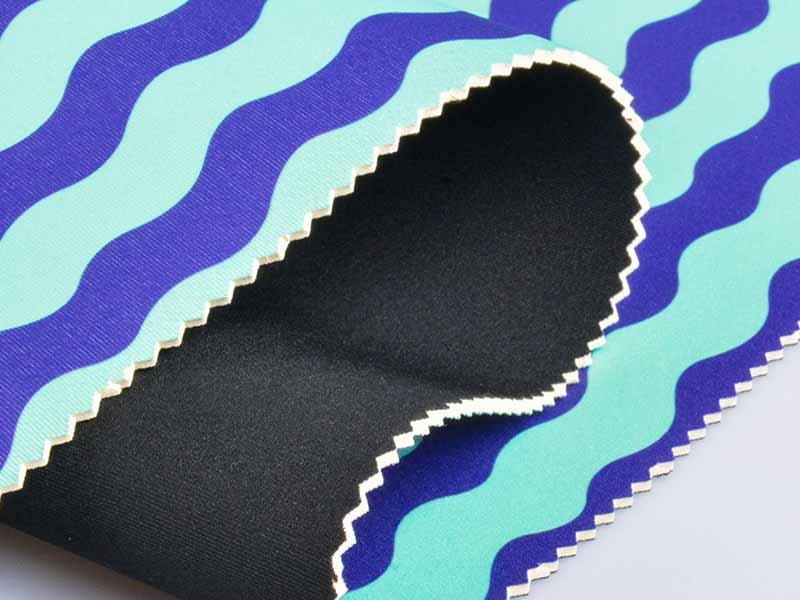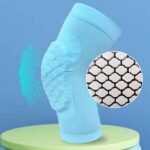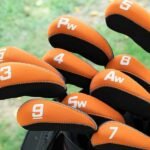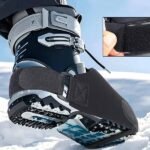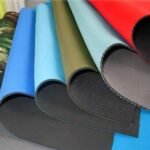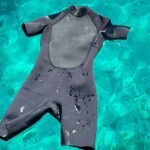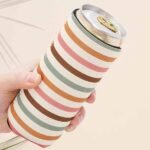Imagine a material that combines the cushioning and insulation of foam, the stretch and resilience of rubber, and the vibrant customization of textile inks—all in one. Printed neoprene fabric does exactly that, transforming a once-technical performance material into a designer’s playground. Whether you’re crafting custom bags with bold patterns, surf jackets with your brand logo, or promotional koozies that pop, printed neoprene lets you stand out without sacrificing functionality.
Printed neoprene fabric is a laminate of closed-cell neoprene foam bonded to textile backings, onto which inks or dyes are applied via digital, sublimation, or screen printing. It retains neoprene’s core benefits—thermal insulation, water resistance, and elasticity—while adding limitless graphic possibilities. Manufacturers value its durability under wear and washing, and designers love its high-definition print clarity.
Over the next sections, we’ll dive into what makes printed neoprene unique, explore various printing techniques, examine its key applications, discuss quality and durability concerns, and reveal how to source the best material for your brand. You’ll also learn about sustainable alternatives and actionable steps to partner with a reliable supplier like Szoneier. But first, let me tell you about a boutique brand that leveraged printed neoprene to triple their sales in six months…
What Makes Printed Neoprene Fabric Unique and How Is It Produced?
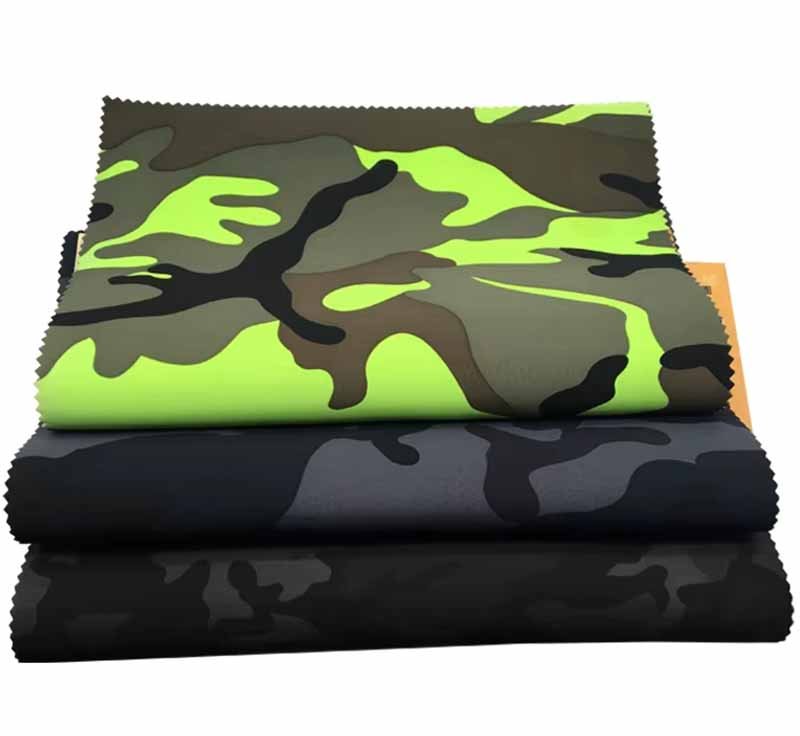
Printed neoprene fabric starts as closed-cell neoprene foam laminated to a textile backing (nylon or polyester). It undergoes surface treatments for ink adhesion, then receives graphics via digital, sublimation, or screen printing. This process retains neoprene’s stretch, insulation, and water resistance while offering vibrant, durable prints ideal for custom products.
Printed neoprene’s allure lies in its hybrid nature: a technical foam core graced with textile-style graphics. To appreciate its uniqueness, let’s dissect its production pipeline:
Neoprene Foam Formation
- Polymerization: Chloroprene monomers link into long rubber chains under heat and pressure.
- Foaming Agents: Introduced mid-process to create gas bubbles, yielding closed-cell foam. This structure traps air for insulation and buoyancy.
Textile Lamination
- Backing Selection: Typically a four-way stretch nylon or polyester knit—chosen for tensile strength and elasticity.
- Adhesive Bonding: Specialized chemicals ensure the rubber and textile layers fuse without delamination, even after repeated flexing or laundering.
Surface Preparation
- Corona Treatment: A high-voltage discharge roughens the fabric surface at a microscopic level, improving ink wetting and adhesion.
- Primer Coating: In some mills, a thin primer layer enhances print fidelity and prevents ink bleed.
Printing Techniques
- Digital Printing: Uses inkjet heads to deposit pigment or dye inks directly onto the fabric. High resolution (600–1200 dpi) enables photographic imagery and fine details.
- Sublimation Printing: Heat transfers dye from paper to fabric—ideal for polyester-backed neoprene. The dye becomes part of the fiber, ensuring wash-fastness and color vibrancy.
- Screen Printing: Employs stencils to apply thicker plastisol or water-based inks. Best for simple, bold graphics and bulk runs due to its durability and cost-effectiveness.
Curing & Finishing
- Heat Curing: Inked fabrics pass through ovens (150–180 °C) to polymerize inks, lock in colors, and sterilize the surface.
- Post-Treatment: Optional topcoats may add UV resistance, antimicrobial properties, or enhanced abrasion resistance.
While printed neoprene integrates high-performance and high-fashion, manufacturers must balance cost, complexity, and end-use requirements. Digital printing affords limitless design freedom at small runs but can be pricier per meter. Screen printing lowers per-unit costs for large batches but limits color palettes. Understanding these trade-offs—along with the environmental footprint of inks and primers—ensures you choose the right process for your product line.
Which Printing Methods Are Best for Neoprene Fabric?
Digital printing offers unmatched detail and color range for small to mid runs, while sublimation locks dye into the polyester backing for durable, vibrant results. Screen printing is cost-effective for high-volume orders with simple graphics. Choose based on order size, design complexity, and durability requirements.
Selecting the optimal printing method means evaluating design goals, budgets, and performance criteria:
Digital Printing
- Advantages:
- Detail & Tonality: Capable of reproducing gradients, photographic images, and complex patterns.
- Quick Turnaround: Minimal setup—ideal for prototyping and small orders (as low as 50–100 m).
- Limitations:
- Cost: Higher ink and machine costs can drive per-meter pricing up by 15–30%.
- Ink Penetration: Surface-only inks may feel slightly raised and can crack if over-stretched.
Sublimation Printing
- Advantages:
- Dye Integration: Color molecules embed within the polyester fibers, ensuring longevity and wash-fastness.
- Soft Hand Feel: No ink build-up—fabric remains supple.
- Limitations:
- Backing Requirement: Only works on polyester-backed neoprene—nylon-backed variants are incompatible.
- Design Constraints: Best for continuous-tone images; limited to designs without large solid white areas (white appears as unprinted neoprene).
Screen Printing
- Advantages:
- Durability: Thick ink layers resist abrasion and repeated washing.
- Economy of Scale: Lower per-unit cost on large runs (500 m+).
- Limitations:
- Color Limitations: Each color requires its own screen—costly for multi-color graphics.
- Setup Time: Screen preparation adds days to lead time, making it less agile for quick-turn orders.
| Method | Min. Order | Color Fidelity | Durability | Avg. Cost per Meter |
|---|---|---|---|---|
| Digital Printing | 50–100 m | Excellent | Good | $12–$18 |
| Sublimation | 100–200 m | Very Good | Excellent | $10–$15 |
| Screen Printing | 500+ m | Good (solids) | Excellent | $8–$12 |
For niche luxury lines or limited editions, digital printing’s creative latitude justifies the premium. Sportswear brands prioritizing wash performance and vibrant all-over prints lean toward sublimation. Meanwhile, promotional suppliers doing large-scale runs of branded koozies or covers find screen printing most cost-effective. Your choice should align production capabilities, inventory strategies, and customer expectations.
What Are the Key Applications of Printed Neoprene in Manufacturing?
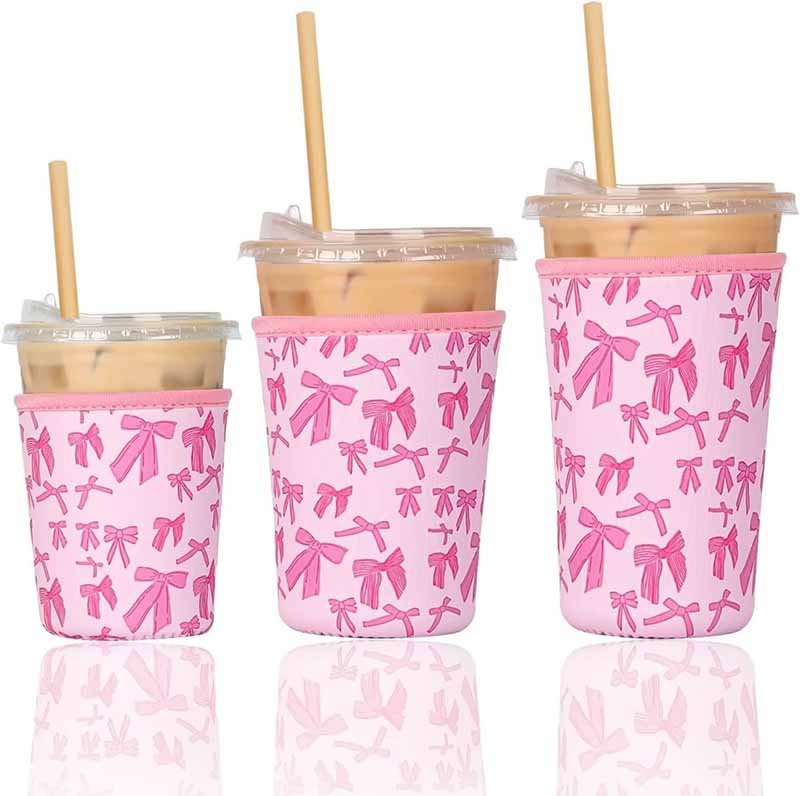
Printed neoprene shines in custom bags, promotional koozies, and accessories thanks to its durability and visual impact. It’s also used in wetsuits with brand logos, phone sleeves with bespoke patterns, and industrial gloves with printed safety markings—demonstrating its versatility across fashion, sports, and corporate gifting.
Printed neoprene finds a home in diverse product categories:
Custom Bags & Accessories
- Laptop Sleeves & Tote Bags: Brands print logos and thematic artwork, offering protective yet stylish carrying solutions.
- Clutches & Cosmetic Cases: Vibrant prints allow fashion labels to release seasonal collections with unique patterns.
Promotional Products
- Koozies & Drink Holders: Low-cost, high-visibility marketing items. Companies imprint event dates, sponsor logos, and campaign messages.
- Mouse Pads & Tech Covers: Corporate gifts featuring full-color motifs—ideal for trade shows and client giveaways.
Sports & Outdoor Gear
- Wetsuit Tops & Rash Guards: Printed panels on high-stretch 2–3 mm neoprene add brand recognition and aesthetic flair to surf apparel.
- Protective Pads & Sleeves: Industrial and medical applications use printed neoprene for caution stripes or instructional icons.
Fashion & Streetwear
- Structured Jackets & Skirts: Panels of printed neoprene bring bold geometric or floral prints to runway pieces, maintaining crisp silhouettes.
- Footwear Accents: Neoprene inserts in sneaker uppers showcase custom graphics while ensuring stretch and fit.
Technical & Safety Products
- Industrial Gloves: Printed safety ratings or grip patterns enhance functionality and branding.
- Tool Wraps & Pouches: Durable neoprene protects tools, with printed measurement guides or logos directly on the fabric.
Market Data:
A 2024 industry survey found that 65% of promotional product buyers favored neoprene items for branding due to their perceived quality, and 72% of sport apparel brands plan to introduce custom-printed neoprene pieces in the next 12 months. Such trends underscore printed neoprene’s growing influence.
Although printed neoprene opens new product horizons, manufacturers must adapt design files for curved surfaces and panel seams. Color matching across batches and ensuring consistency under different lighting conditions are additional challenges. Partnering with suppliers who offer pre-production mockups and color proofs is essential to minimize costly reworks.
How Do You Ensure Print Quality and Durability on Neoprene?
Ensuring print quality involves choosing the right ink chemistry and curing protocol—heat and pressure parameters tuned to neoprene’s foam core. Rigorous tests (wash cycles, abrasion, UV exposure) verify adhesion and colorfastness. Partnering with certified mills and demanding test reports safeguards product reputation.
Print quality on neoprene hinges on both chemistry and process control:
Ink Selection & Formulation
- Elastomeric Inks: Formulated to stretch with the neoprene without cracking.
- UV-Stable Pigments: Resist color fading and chalking under sunlight.
- Eco-Compliant Formulas: Low-VOC, water-based options meet stringent regulations (e.g., REACH, OEKO-Tex).
Curing & Bonding
- Temperature Control: Curing ovens set between 150–180 °C for precise durations (2–5 minutes) ensure ink polymers cross-link without damaging the foam.
- Pressure Management: Conveyor speed and roller pressure calibrated to flatten ink uniformly, preventing pooling or voids.
Quality Control Tests
- Wash Fastness: 50+ industrial laundries at 30 °C with mild detergent; acceptable grade 4–5 (out of 5) for color retention.
- Abrasion Resistance: Martindale rub test—1,000+ rubs with minimal wear.
- UV Exposure: Xenon arc chamber simulates 500+ hours of sunlight; color change ΔE < 3.
- Adhesion Test: Cross-hatch tape test confirms ink remains bonded under tension.
In-Line Inspection
- Spectrophotometers: Monitor color consistency meter-to-meter.
- Vision Systems: Automated cameras detect print defects (misregistration, streaks) at line speeds.
Supplier Certification & Transparency
- Third-Party Audits: ISO 9001 and ISO 14001 certifications guarantee process rigor and environmental management.
- Batch Traceability: Record keeping of resin lots, ink batches, and curing logs ensures issues can be traced and contained.
Best Practices:
Before full production, always request certified lab reports and pre-production samples. For multi-color designs, evaluate wet-on-wet versus sequential cures to optimize throughput. Finally, train your design team to account for neoprene’s stretch factor—expand artwork by 10–15% to compensate for stretching during wear.
What Benefits Does Printed Neoprene Offer for Custom Products?
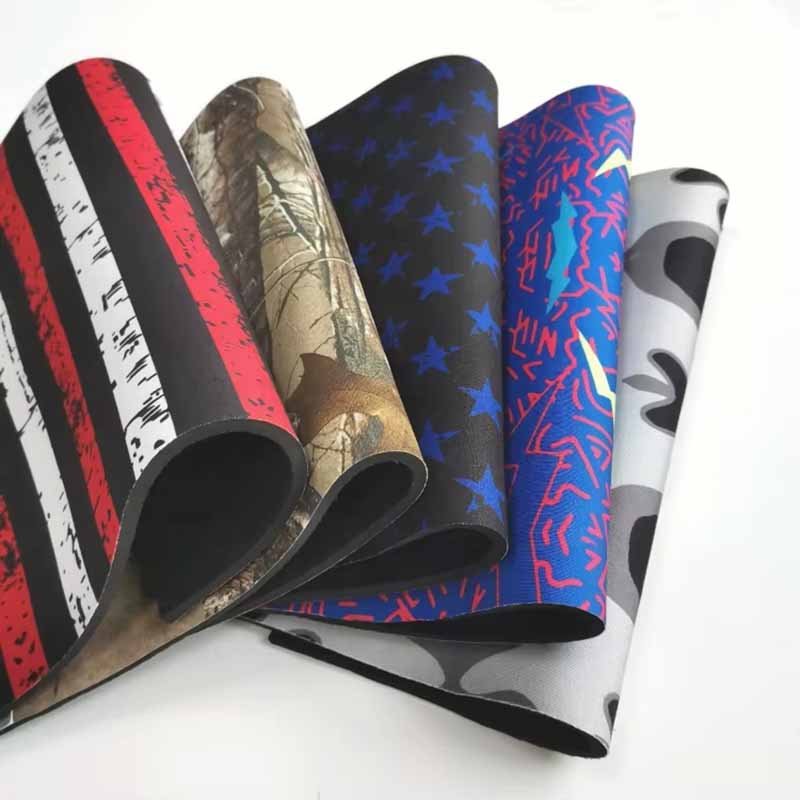
Printed neoprene delivers branding freedom, combining foam cushioning, insulating properties, and water resistance with high-definition graphics. It elevates product perceived value—customers pay premiums for personalized, performance-driven items that marry style and function in one material.
The value proposition of printed neoprene resonates on multiple levels:
Brand Differentiation
- Unique Aesthetics: Full-coverage prints turn any product into a canvas, allowing limited-edition releases and seasonal collections.
- Co-Branding Opportunities: Partner collaborations (e.g., artists, influencers) become tangible through signature prints on protective sleeves or apparel.
Functional Performance
- Thermal Insulation: Closed-cell foam maintains temperature—ideal for lunch bags or beverage koozies.
- Water & Stain Resistance: Easy-to-clean surfaces expand usage to outdoors and harsh environments.
Ergonomics & Protection
- Shock Absorption: Foam core mitigates impact—relevant for tech cases and protective wear.
- Compression Support: 2–3 mm neoprene provides gentle compression in athletic apparel, aiding muscle recovery.
Perceived Value & Pricing Power
- Premium Pricing: Customers associate custom prints and neoprene’s durability with luxury—brands can command 20–40% higher margins versus unprinted alternatives.
- Repeat Purchases: Personalization drives loyalty—corporate clients reorder branded promotional items annually.
Supply Chain Efficiency
- Low MOQ Custom Runs: Savings on warehousing and risk—especially when partnering with mills offering 200 m+ minimums.
- Rapid Prototyping: Digital print enables same-day mockups, slashing time to market.
Data Snapshot:
In a recent survey, 78% of buyers listed “custom print options” as a top factor when selecting promotional merchandise, and 64% said printed neoprene products outperformed plain items in reorder rates. These figures highlight the tangible business impact of printed neoprene.
How Do You Choose the Right Printed Neoprene Supplier?
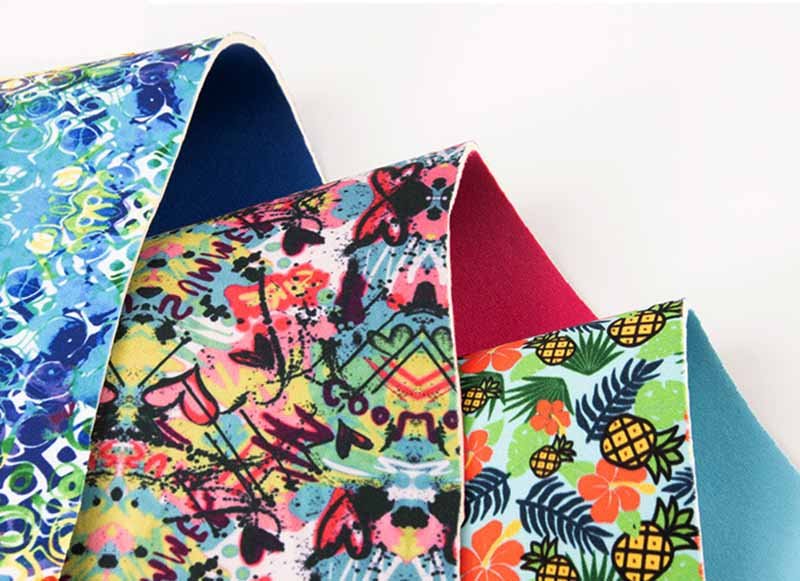
Evaluate suppliers on MOQ flexibility, sample turnaround (≤7 days), design support, and certifications (ISO 9001, OEKO-Tex). Request lab test reports, production photos, and references. A partner like Szoneier offers low MOQ, free design mockups, rapid prototyping, and global shipping from certified mills.
Selecting a printed neoprene partner is as critical as choosing the fabric itself:
MOQ & Sampling
- Low MOQ: Look for mills accepting 200 m per color/print, enabling agile collection drops.
- Sample Services: In-house design teams should provide digital mockups within 24 hours, physical swatches in 5–7 days.
Customization & Design Support
- Color Matching: Pantone and ICC profile management ensure your brand hues remain consistent across batches.
- Pattern Repeat Management: Technical designers adjust artwork for seam allowances and sleeve/gusset panels.
Certifications & Compliance
- Quality Management: ISO 9001 for production consistency.
- Environmental Standards: OEKO-Tex Standard 100 and REACH compliance minimize harmful chemicals.
Production Capacity & Lead Times
- Roll-to-Roll Printing Widths: 1.6 m–2.8 m capabilities accommodate diverse panel sizes.
- Turnaround: Standard print runs delivered in 2–3 weeks; rush services in 10–14 days.
Transparency & Communication
- Dedicated Account Managers: Single point of contact ensures clarity on order status, shipping, and quality checks.
- Digital Portals: Real-time production tracking and QC photo updates build trust.
Logistics & Global Reach
- Warehouse Locations: Regional distribution centers in LA, Rotterdam, Dubai for JIT deliveries.
- Freight Partnerships: Competent handling of air, sea, and express couriers reduces delays.
Case Study – Szoneier Partnership:
A mid-sized sportswear brand approached Szoneier with a 300 m all-over print neoprene order. Utilizing Szoneier’s free design mockup service, they finalized artwork in two days. Samples arrived on day five, and full production shipped by day 16—well ahead of the brand’s 30-day launch target.
Are There Sustainable Options for Printed Neoprene Fabric?
Eco-friendly neoprene options include limestone-based (Yulex) and recycled foam blends, reducing carbon footprint by up to 80%. Water-based inks and digital printing further minimize environmental impact, while OEKO-Tex certification ensures no harmful chemicals are present.
As sustainability becomes non-negotiable, the neoprene industry must evolve:
Limestone-Based Neoprene
- Yulex® Alternative: Replaces 100% of petrochemical chloroprene with plant-derived limestone, cutting greenhouse gas emissions by up to 80%.
- Performance Trade-Offs: Comparable thermal and mechanical properties; slightly firmer hand feel.
Recycled Neoprene
- Post-Industrial Scrap: Foam remnants reprocessed into new sheets, diverting waste from landfills.
- Closed-Loop Initiatives: Some mills collect end-of-life wetsuits and bags for regrinding into usable foam.
Green Printing Practices
- Water-Based & UV-Cured Inks: Reduce volatile organic compounds (VOCs) and energy use during curing.
- Digital Over Screen: On-demand digital printing cuts waste by printing only what’s needed.
Certifications & Transparency
- Global Recycled Standard (GRS): Verifies recycled content and chain of custody.
- Bluesign® Approval: Ensures chemicals and processes meet strict environmental and worker safety criteria.
Challenges & Considerations
- Cost Premium: Sustainable neoprene can cost 20–30% more—mitigated by marketing to eco-conscious consumers willing to pay a premium.
- Availability: Not all mills offer these options at low MOQ—plan procurement accordingly.
Balanced Perspective:
While sustainable neoprene addresses environmental concerns, its adoption requires careful cost-benefit analysis. Brands can start with limited-edition eco-lines or mix standard and recycled materials to gauge market appetite before full-scale transition.
Conclusion
Printed neoprene fabric has redefined what manufacturers can achieve—merging the technical virtues of neoprene (insulation, stretch, water resistance) with the branding power of high-definition graphics. From custom bags and wetsuits to corporate giveaways and protective gear, its applications span industries and use cases. By understanding production methods, print techniques, quality assurance, and supplier selection, you can harness printed neoprene to launch standout products that command premium pricing and foster brand loyalty.
Ready to elevate your product line? Contact Szoneier today for:
- Free design mockups and rapid prototyping
- Low MOQ custom printed neoprene (starting at 200 m)
- Certified quality (ISO 9001, OEKO-Tex, REACH)
- Fast global shipping and dedicated account support
Let’s create the next generation of custom neoprene products—beautifully printed, performance-driven, and sustainably crafted.

